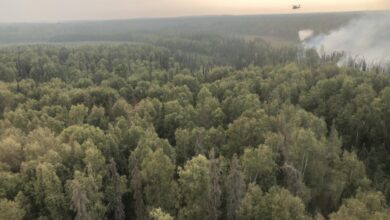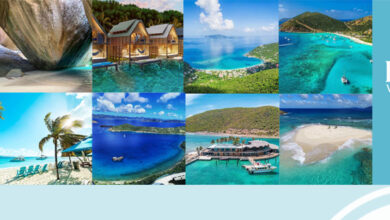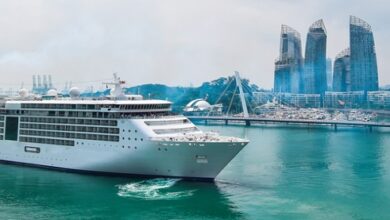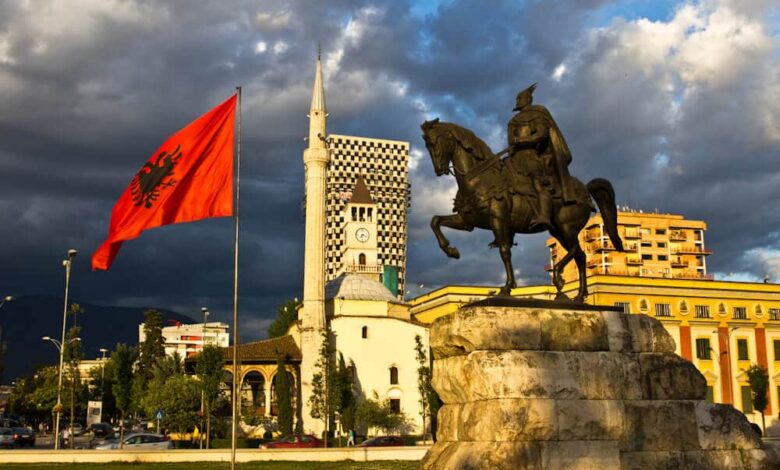
A Visit to Albania Unveiling the Beauty
A visit to Albania sets the stage for this enthralling narrative, offering readers a glimpse into a land steeped in history, vibrant culture, and breathtaking landscapes. From ancient ruins to bustling cities, this journey promises an unforgettable experience, revealing the warmth of the Albanian people and the captivating allure of their traditions.
Albania’s rich tapestry of history, culture, and stunning landscapes awaits those seeking adventure and cultural immersion. This exploration will delve into the country’s past, present, and future, offering insights into its unique character and captivating attractions.
Introduction to Albania
Albania, nestled in the heart of the Balkan Peninsula, boasts a rich and captivating history, woven with threads of ancient civilizations and modern struggles. From its Illyrian roots to its tumultuous 20th-century journey, the nation’s past continues to shape its present. Its geographical position, bordering the Adriatic Sea and neighboring countries like Greece, Montenegro, and North Macedonia, has historically influenced its development and trade routes.
Today, Albania is a vibrant nation, navigating the complexities of the modern world while preserving its cultural heritage.Albania’s geographical location plays a significant role in its identity and interactions with the surrounding region. Straddling the Balkan Peninsula, it borders the Adriatic Sea, providing a vital maritime connection. Its position has historically influenced trade routes and interactions with neighboring countries, contributing to a unique cultural blend.
This geographical positioning has also been a factor in Albania’s geopolitical relationships, impacting its foreign policy and economic ties.
Political and Economic Landscape
Albania transitioned from a communist regime to a parliamentary republic in the late 20th century. The country has made considerable strides in economic reform and development, but challenges remain. Significant progress has been made in attracting foreign investment, fostering tourism, and improving infrastructure. However, unemployment and income disparities remain prevalent issues. The Albanian government continues to work toward greater economic stability and sustainable growth.
Tourist Attractions and Activities
Albania offers a diverse range of attractions for tourists, catering to various interests. From the breathtaking Albanian Alps to the stunning beaches of the Adriatic coast, there’s something for everyone. The historic city of Berat, with its impressive UNESCO-listed architecture, provides a glimpse into Albania’s rich past. Scuba diving and snorkeling opportunities in the crystal-clear waters of the Albanian Riviera provide a chance to explore the underwater world.
The nation’s numerous archaeological sites and historical monuments allow visitors to delve into the country’s rich history. A great example of this is the Butrint National Park, a testament to the Roman Empire’s presence in the region. This rich tapestry of history and natural beauty makes Albania a captivating destination.
- Berat: A UNESCO World Heritage city, Berat boasts stunning architecture and picturesque views. The city’s Ottoman-era houses and fortifications are a testament to its rich history, making it a popular destination for both history enthusiasts and architectural admirers.
- Butrint National Park: A significant archaeological site, Butrint reveals the legacy of ancient civilizations. Its well-preserved ruins offer insight into Roman, Greek, and Illyrian influences, providing a unique perspective on the region’s historical past.
- Albanian Alps: The Albanian Alps offer breathtaking scenery for hikers and nature lovers. The rugged mountains provide opportunities for hiking, trekking, and experiencing the raw beauty of nature. Hiking through the mountains provides stunning panoramic views and opportunities to explore the region’s unique flora and fauna.
Albanian People and Traditions, A visit to albania
The Albanian people, with their distinct traditions and customs, are known for their hospitality and warmth. Their culture is deeply rooted in centuries of history and is evident in their music, dance, and culinary arts. Traditional Albanian clothing and customs reflect a blend of influences from the surrounding regions. For example, the vibrant folk music and dances provide a glimpse into the nation’s cultural heritage.
The emphasis on family and community values is also a cornerstone of Albanian society.
My recent trip to Albania was amazing! The stunning scenery and friendly locals made it unforgettable. Interestingly, an ARC study recently revealed a growing trend toward one-way ticket sales, arc study reveals a growing trend toward one way ticket sales , which got me thinking about how this might affect future travel plans. Maybe I’ll need to book a return ticket after all, considering how much I enjoyed exploring the country.
Geography and Relation to Surrounding Countries
Albania’s geographical position has profoundly shaped its history and relationships with neighboring countries. Surrounded by Greece, Montenegro, and North Macedonia, Albania’s location has been a focal point of historical trade routes and cultural exchange. The Adriatic coastline provides access to the sea, contributing to the country’s maritime trade and influence. Albania’s position has been crucial in shaping its geopolitical relations and interactions with its neighboring countries.
Experiencing Albanian Culture: A Visit To Albania
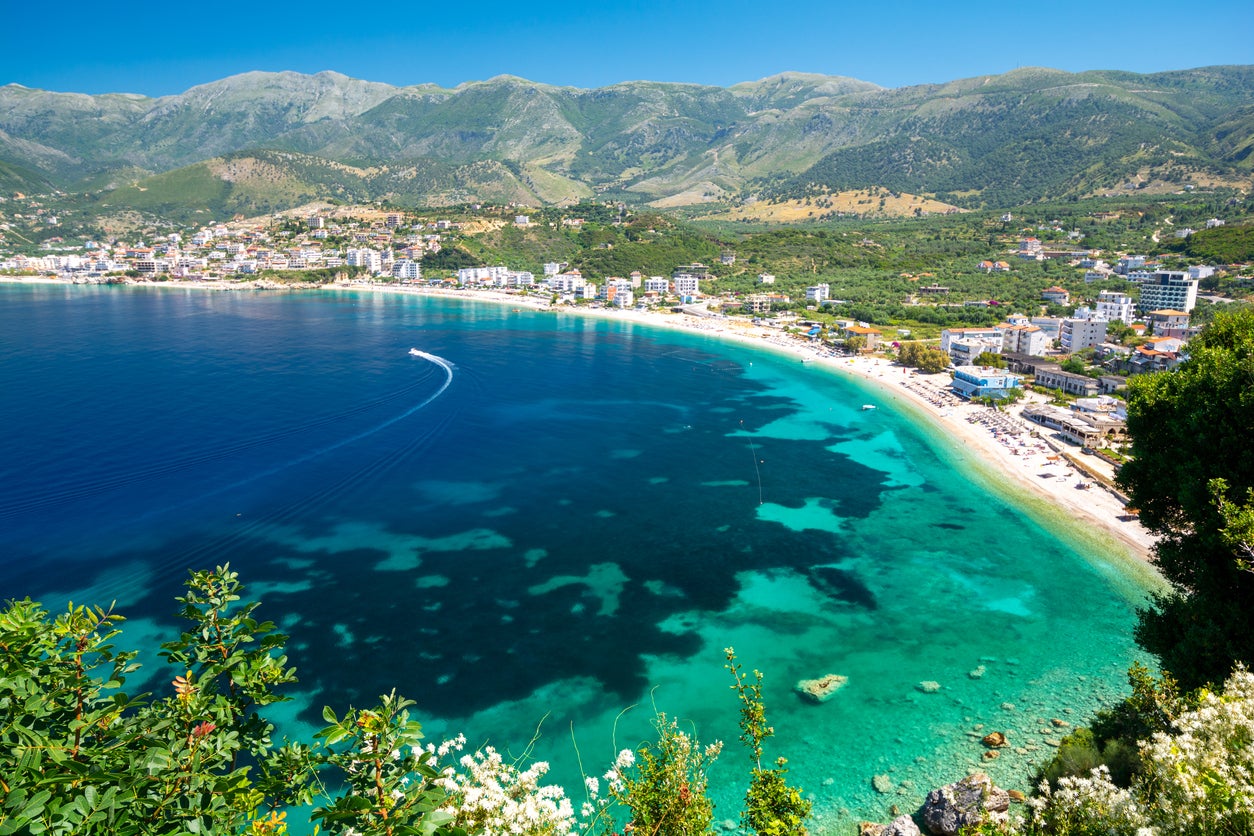
Albania, a land steeped in history and tradition, offers a captivating glimpse into its rich cultural heritage. From the vibrant artistry to the hearty cuisine, and the intricate traditions, each facet of Albanian culture tells a story of resilience and enduring spirit. The country’s unique blend of influences, from the ancient Illyrians to Ottoman rule, has shaped its customs and traditions in fascinating ways.Albanian culture is deeply intertwined with its people’s history and environment.
The strong sense of community is evident in the celebrations and festivals, showcasing the country’s vibrant social fabric. The cuisine, reflecting the diverse landscapes and influences, is a testament to the country’s culinary ingenuity.
Albanian Art, Music, and Dance
Albanian art forms, including painting, sculpture, and traditional crafts, often depict scenes from everyday life and historical events. The artistry is often deeply symbolic, reflecting the country’s rich history and the values of its people. Traditional music, characterized by the use of instruments like the duduk and the tepelini, is a cornerstone of Albanian celebrations. The music, with its melodic tunes and rhythmic beats, often accompanies lively dances that vary in style depending on the region.
My recent trip to Albania was absolutely fantastic! The stunning scenery and friendly locals made it a truly memorable experience. However, with the recent news about Zika virus outbreaks affecting destinations popular with babymooners, it got me thinking about how travel agents are now redirecting these couples to safer alternatives, like my recent Albanian adventure. Agents redirect babymooners as Zika spreads is a great read if you’re planning a trip or want to understand the current travel landscape.
Overall, Albania remains a wonderful destination for those seeking a peaceful and beautiful getaway.
The dances often involve intricate steps and synchronized movements, showcasing the athleticism and creativity of the performers.
Albanian Cuisine
Albanian cuisine is a delectable tapestry of flavors, drawing inspiration from the country’s diverse landscapes and historical influences. Key ingredients include fresh herbs, spices, and vegetables, reflecting the country’s agricultural bounty. Dishes like “byrek,” a savory pastry filled with various ingredients, and “qofte,” a meatball dish, are emblematic of Albanian culinary traditions. The use of olive oil, garlic, and yogurt is prevalent, lending a unique flavor profile to many dishes.
Traditional Albanian Clothing and Accessories
Traditional Albanian clothing varies across different regions and communities, each with its own unique design elements. Women’s attire often includes embroidered blouses, skirts, and colorful head scarves, showcasing the intricate artistry of local artisans. Men’s clothing typically involves embroidered shirts, trousers, and vests, reflecting the same commitment to detail and craftsmanship. Accessories like jewelry and belts often incorporate precious metals and embellishments, adding a touch of elegance and personalization to the outfits.
Albanian Celebrations and Festivals
Albanian celebrations and festivals are a vibrant display of the country’s cultural heritage. The festivals often feature music, dance, and food, reflecting the community’s spirit and the joy of coming together. Traditional festivals may celebrate specific religious holidays or honor local heroes. For example, the celebration of the Albanian national holiday often includes large gatherings, parades, and cultural performances.
Comparison of Albanian Customs with Other European Countries
| Custom | Albania | Example of a European Country (e.g., Italy) |
|---|---|---|
| Family Values | Family is highly valued, and family members often live together or in close proximity. | Family is also important, but nuclear families are more common. |
| Hospitality | Albanians are renowned for their hospitality and welcoming nature. | Italian hospitality is well-known, with a focus on good food and conversation. |
| Religious Observances | Islam and Orthodox Christianity are the most prominent religions, influencing celebrations and traditions. | Catholicism and other religions play significant roles in Italian culture. |
| Music and Dance | Traditional music and dance forms are integral parts of celebrations and social gatherings. | Music and dance are important parts of Italian culture, with variations across regions. |
This table provides a basic comparison, and there are nuances and variations within each country.
Practical Information for Travelers
Albania, a land of breathtaking landscapes and rich culture, awaits your exploration. To make the most of your trip, understanding the practicalities is essential. This section provides vital information on visas, currency, travel times, transportation, accommodation, language, health, and safety, ensuring a smooth and enjoyable journey.
Visa Requirements
Albania generally offers visa-free entry for many nationalities for stays of up to 90 days. However, it’s crucial to check the specific visa requirements based on your nationality on the Albanian Ministry of Foreign Affairs website. This proactive step helps avoid potential issues at the border.
Currency and Exchange Rates
The Albanian Lek (ALL) is the official currency. Exchange rates fluctuate, so it’s wise to research current exchange rates before your trip. You can exchange currency at banks, exchange bureaus, or hotels. Keep in mind that credit cards are widely accepted in tourist areas, but cash may be more useful in smaller towns.
Best Time to Visit for Specific Activities
Albania’s beauty unfolds throughout the year, each season offering unique experiences. Spring and autumn provide pleasant weather for hiking and exploring, while summer is ideal for beach holidays. Winter offers a chance to experience the snowy mountains for skiing and snowboarding. Planning your trip around specific activities, such as hiking in the mountains, or enjoying the beach, will optimize your time.
Transportation Options
Albania offers various transportation options. Buses are a cost-effective way to travel between cities. Trains are a scenic option for shorter journeys, especially along the coastal areas. Ferries connect various coastal towns. Consider your destination and travel style when choosing your transportation method.
Accommodation Options
From budget-friendly guesthouses to luxurious hotels, Albania offers a range of accommodation options to suit every traveler’s budget. Look for accommodations with reviews to get an idea of the level of service and amenities.
Local Language and Basic Phrases
Albanian is the official language. While English is spoken in tourist areas, learning some basic Albanian phrases enhances your interactions with locals and shows respect for their culture.
My recent trip to Albania was fantastic! The scenery was breathtaking, and the food was delicious. However, I was a bit bummed to hear about the Aker Yards name change. Apparently, aker yards name goes away , which was a significant part of the local history, and I was hoping to learn more about its past.
Regardless, my Albanian adventure was still a wonderful experience.
Health and Safety Precautions
Albania is generally safe for tourists. Consult your doctor about necessary vaccinations and health precautions. Be mindful of your belongings in crowded areas and take standard safety precautions.
Essential Phrases
| Albanian | English |
|---|---|
| Mirëdita | Hello |
| Faleminderit | Thank you |
| Ju lutem | Please |
| Më fal | Excuse me |
| Ku është… | Where is…? |
| Sa kushton? | How much does it cost? |
| Po | Yes |
| Jo | No |
Exploring Albanian Cities and Towns
Albania’s diverse cities and towns offer a captivating journey through history and culture. From the bustling capital of Tirana to the ancient stone streets of Berat, each location tells a unique story. The architectural styles vary, reflecting different periods of influence and showcasing the country’s rich past. This exploration delves into the specific characteristics of these significant locations, highlighting their historical significance and cultural charm.Albania’s urban landscape is a tapestry woven from centuries of history, with each city holding a unique thread.
Tirana, the capital, pulsates with modern life while preserving glimpses of its past. Berat, nestled in the mountains, boasts an architectural treasure trove. Gjirokastra, a UNESCO World Heritage site, reveals the charm of traditional Albanian architecture. This section will examine these cities, exploring their distinct qualities and the stories they hold.
Tirana: The Vibrant Capital
Tirana, the capital city of Albania, is a vibrant blend of the old and the new. The city’s modern skyline contrasts with historical remnants, showcasing a dynamic evolution. Notable landmarks include the Skanderbeg Square, a central hub, and the Et’hem Bey Mosque, a testament to Ottoman influence. The city is characterized by a lively atmosphere, particularly in its pedestrian zones and cafes, offering a rich cultural experience.
Modern architecture coexists with historical buildings, creating a unique and captivating urban environment.
My recent trip to Albania was amazing, with stunning coastal views and vibrant culture. While exploring, I stumbled upon some fantastic reviews about the ample diversions on Louis Cristal Aegean sailing, which sounded like a great way to experience the region’s beauty from the water. The variety of excursions available, as detailed on ample diversions on louis cristal aegean sailing , definitely piqued my interest.
Ultimately, though, I loved my time exploring Albania’s hidden gems and the local charm.
Berat: A City of Stone and History
Berat, a UNESCO World Heritage city, is renowned for its stunning architecture. The city’s old town, with its cobblestone streets and colorful houses, stands as a captivating testament to the Ottoman and Byzantine eras. The Berat Castle, perched atop a hill, overlooks the city, providing panoramic views. The intricate stonework and preserved structures offer a glimpse into the region’s rich history.
The combination of well-preserved architecture, panoramic views, and historical significance make Berat a must-visit destination.
Gjirokastra: A UNESCO Gem
Gjirokastra, another UNESCO World Heritage site, exudes a unique charm. Its traditional houses, built in the typical Albanian style, display intricate craftsmanship and a profound understanding of local materials. The city’s architecture, largely influenced by the Ottoman period, showcases a blend of architectural elements. The preserved old town evokes a sense of tranquility and historical continuity. The harmonious blend of traditional architecture and cultural significance makes Gjirokastra a captivating destination.
Other Major Cities
Other major cities in Albania, such as Elbasan, Durrës, and Shkodër, also hold cultural and historical significance. Elbasan, for example, boasts a medieval castle and historical mosques, offering a glimpse into Albania’s diverse past. Durrës, a port city, has an ancient history and a well-preserved Roman amphitheater. Shkodër, situated in the north, retains traces of Ottoman and Venetian influence in its architecture.
These cities, while not as prominently featured as Tirana, Berat, or Gjirokastra, contribute to the overall rich tapestry of Albania’s historical and cultural landscape.
Top 5 Tourist Destinations in Albania
| Rank | Destination | Key Attractions |
|---|---|---|
| 1 | Berat | Berat Castle, Old Town, museums |
| 2 | Tirana | Skanderbeg Square, Dajti Mountain, National History Museum |
| 3 | Gjirokastra | Old Town, Ethnographic Museum, historical architecture |
| 4 | Durrës | Roman Amphitheater, beaches, historical sites |
| 5 | Shkodër | Skanderbeg Square, Skanderbeg Fortress, historical buildings |
Notable Historical Sites and Monuments
Albania’s historical sites and monuments offer a captivating journey through time. The Berat Castle, with its imposing presence, is a prominent example of a historical landmark. Other noteworthy sites include the ruins of Apollonia, a well-preserved ancient Greek city, and the Butrint National Park, showcasing the vestiges of a Roman city. These locations provide invaluable insights into the country’s past and offer a unique experience for visitors.
Architectural Styles in Albanian Cities
Albania’s cities exhibit a diverse range of architectural styles, reflecting the country’s historical influences. From the Ottoman-era architecture found in Berat and Gjirokastra, to the modern buildings in Tirana, each city showcases a unique blend of architectural elements. The combination of these diverse styles offers a rich and fascinating perspective on Albania’s history and evolution.
Activities and Adventures in Albania
Albania, a land of dramatic landscapes, offers a plethora of activities for every traveler. From the towering peaks of the Albanian Alps to the sun-drenched beaches of the Adriatic coast, the country provides unparalleled opportunities for exploration and adventure. Discover hidden valleys, vibrant villages, and ancient ruins while experiencing the warmth of Albanian hospitality.
Natural Beauty of Albanian Landscapes
Albania boasts a diverse range of natural beauty, catering to various interests. The mountainous regions, particularly the Albanian Alps, present stunning vistas and challenging terrain for hikers and trekkers. The coastal areas, with their azure waters and picturesque beaches, invite relaxation and water sports enthusiasts. The contrasts between the rugged mountains and the serene coast create a unique and captivating experience.
Hiking, Trekking, and Outdoor Activities
Albania’s varied terrain provides excellent opportunities for hiking and trekking. From gentle trails through lush forests to challenging ascents of alpine peaks, there’s a path for every level of experience. The Dajti Mountain offers scenic walks with panoramic views of Tirana and the surrounding valleys. The Berat region provides diverse trails leading to picturesque villages nestled in the hills.
Guided tours and local outfitters are readily available to assist with planning and providing necessary equipment.
Water Sports and Beach Activities
Albania’s Adriatic coastline offers numerous opportunities for water sports. From swimming and sunbathing on pristine beaches to kayaking and paddleboarding on calm bays, there’s a plethora of options. The Ksamil area is known for its crystal-clear waters and stunning beaches perfect for water sports. Numerous beach resorts and facilities cater to tourists, providing a wide array of services and activities.
Cultural Immersion Opportunities
Beyond the natural beauty, Albania offers opportunities for cultural immersion. Visiting local villages provides a chance to interact with locals and experience their traditional way of life. Traditional music and dance performances offer glimpses into the rich cultural heritage of the country. Exploring historic sites and museums allows deeper understanding of Albanian history and culture.
Recommended Tours and Excursions
Numerous tours and excursions are available, tailored to various interests and budgets. Tours focusing on cultural heritage can include visits to historical sites like Berat and Gjirokaster. Adventure tours can be arranged for hiking, trekking, and exploring mountainous regions. Sea tours exploring the coastline, including boat trips to nearby islands, are another popular option.
Local Markets and Shopping Experiences
Albania’s local markets are vibrant and bustling places to experience the local culture and find unique souvenirs. Markets in towns like Tirana offer a wide array of handcrafted goods, textiles, and local produce. The vibrant atmosphere and the opportunity to interact with vendors provide an authentic shopping experience.
Visiting Local Villages and Interacting with Locals
Visiting local villages provides a chance to immerse in the authentic Albanian way of life. Locals are generally welcoming and eager to share their culture and traditions. Accommodation options, such as guesthouses and farm stays, provide a unique opportunity to stay in a local environment. Direct interaction with locals offers valuable insights into their daily routines and cultural values.
Types of Accommodations
Albania caters to diverse interests with various accommodation options. Eco-lodges nestled in the mountains offer a serene and sustainable experience, while boutique hotels in coastal towns provide luxurious stays. Traditional guesthouses offer a more immersive cultural experience. Budget-friendly hostels are available in urban areas, providing a social environment for travelers.
Food and Drink in Albania
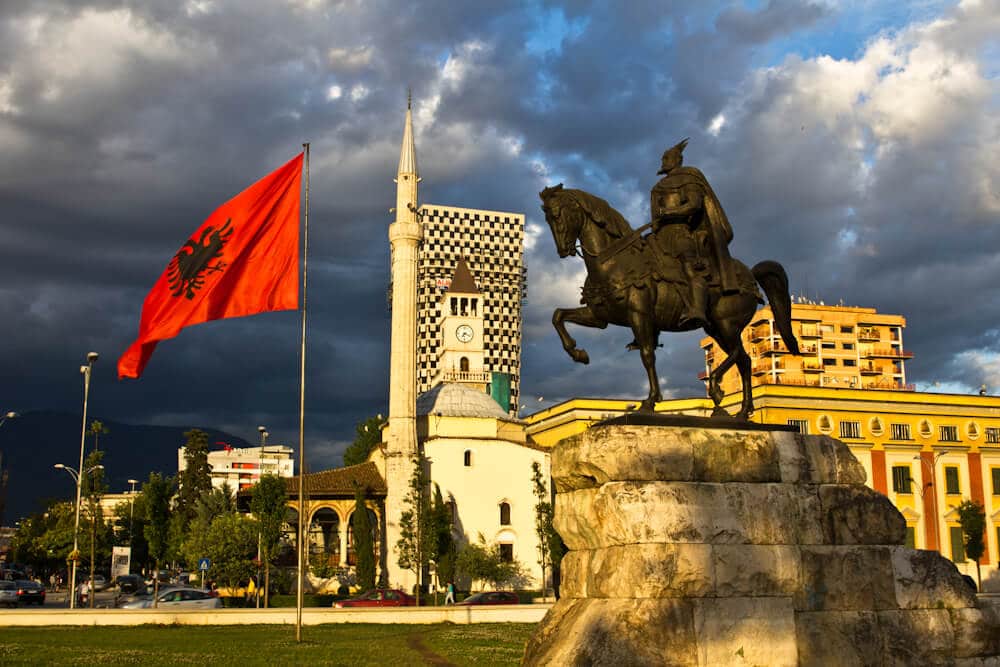
Albanian cuisine, a vibrant tapestry woven from diverse influences, reflects the country’s rich history and geographical position. From the mountainous highlands to the coastal plains, each region boasts its unique culinary traditions, showcasing a passion for fresh, seasonal ingredients. The warmth and hospitality of Albanian people are often expressed through sharing a meal, highlighting the deep cultural significance of food.Albanian cuisine is a testament to the country’s diverse landscapes and historical encounters.
The flavors are a blend of Mediterranean influences, with hints of Turkish, Balkan, and even Italian touches. A common thread throughout is the emphasis on fresh, locally sourced ingredients, resulting in dishes that are both flavorful and healthy.
Key Ingredients in Albanian Cuisine
Albanian cooking relies heavily on fresh produce, particularly vegetables like tomatoes, peppers, onions, and zucchini. Herbs, such as oregano, mint, and parsley, are generously used, adding a distinct aromatic touch to many dishes. Dairy products, particularly sheep’s milk cheese and yogurt, play a prominent role, providing both flavor and texture. Wheat, a staple in the region, is used in various forms, from bread to pasta.
Traditional Dishes and Preparation Methods
Many traditional Albanian dishes are centered around simple, yet flavorful preparations. A prime example is “Byrek,” a savory pastry filled with cheese, spinach, or meat. It’s typically baked in a flaky, layered dough, showcasing the skill of the local bakers. Another popular dish is “Tavë Kosi,” a hearty stew of lamb or beef cooked in a casserole dish with yogurt, showcasing the versatile nature of Albanian cooking.
The preparation methods often involve slow cooking, roasting, or grilling, highlighting the natural flavors of the ingredients.
Regional Variations in Albanian Cooking
Albanian cooking exhibits significant regional variations. In the mountainous areas, hearty stews and grilled meats are common, reflecting the availability of livestock. Coastal regions feature seafood dishes, incorporating fresh catches into salads, stews, and grills. The central region often uses a wider variety of vegetables and herbs in their dishes, showcasing the fertile land.
Availability of International Food Options
International food options are readily available in larger cities and tourist areas. Restaurants offering Italian, Turkish, and other international cuisines are common, alongside traditional Albanian establishments. This provides tourists and locals with a choice of culinary experiences, appealing to a diverse range of palates.
Popular Albanian Dishes and their Origins
| Dish | Description | Origin |
|---|---|---|
| Byrek | Savory pastry, often filled with cheese, spinach, or meat. | Traditional Albanian dish, with variations across regions. |
| Tavë Kosi | Hearty stew of lamb or beef cooked with yogurt. | Traditional dish, especially popular in mountainous areas. |
| Qofte | Meatballs, often served in a tomato sauce or broth. | Popular across the Balkans, with Albanian variations. |
| Fërgesë | Grilled vegetables, often served with a side dish. | Common in rural areas, utilizing fresh seasonal produce. |
Local Beverages
Albania boasts a rich wine tradition, with local varietals such as the white “Veri” and the red “Shiraz.” Local beers are also popular, brewed in modern breweries that cater to the preferences of locals and tourists. Freshly squeezed fruit juices are a refreshing choice, particularly during the summer months.
My recent trip to Albania was absolutely stunning! The vibrant culture and delicious food were incredible. After my amazing time exploring Albania, I was thrilled to hear about the Norwegian Joy cruise ship, updated for an Alaskan adventure after its China sojourn, as detailed in this great article after china sojourn norwegian joy updated for alaska.
It sounds like a fantastic way to experience the Alaskan wilderness. I’m already planning my next trip back to Albania to explore more of its hidden gems!
Importance of Food in Albanian Culture
Food plays a crucial role in Albanian culture, serving as a symbol of hospitality and shared experiences. Meals are often communal events, bringing families and friends together. The warmth and generosity demonstrated through food sharing are essential parts of Albanian social interactions.
Images and Visuals
Albania’s beauty is a feast for the eyes, from the rugged grandeur of the mountains to the sun-drenched shores of the Adriatic. A journey through this country is a journey through stunning landscapes and vibrant culture, where history and modernity intertwine. The imagery reflects the unique character of the Albanian people, their traditions, and the beauty of their surroundings.Albania’s visual appeal extends beyond its natural landscapes.
The architectural heritage, from ancient fortresses to charming villages, provides a glimpse into the country’s rich past and the creativity of its people. This visual richness is a crucial element of the Albanian experience, allowing visitors to immerse themselves in the culture and heritage.
Albanian Landscapes
Albania boasts a breathtaking array of natural beauty. From the snow-capped peaks of the Albanian Alps to the verdant valleys nestled between them, the mountains offer panoramic views. The emerald green forests, dotted with cascading waterfalls, create a serene and awe-inspiring atmosphere. The rugged terrain of the Dinaric Alps is punctuated by hidden valleys and charming villages clinging to the slopes.
The coastal regions, fringed with pristine beaches and turquoise waters, are equally captivating. The Adriatic Sea, with its crystal-clear waters and dramatic cliffs, presents a scene of unparalleled beauty. The contrasting hues of the coastline, from the pale sand to the deep blue of the sea, provide a captivating spectacle.
Albanian Architecture and Cultural Elements
Albanian cities and towns display a rich tapestry of architectural styles, reflecting the country’s history and cultural influences. The historic centers often showcase Ottoman-era mosques, churches, and traditional houses with intricate stonework. The use of local materials, such as stone and wood, is evident in the design of buildings, creating a sense of authenticity and connection to the environment.
The architecture of these cities often reflects the social structures of the time, with grand mansions showcasing the wealth and power of their inhabitants, while modest homes speak to the daily lives of the common people. These elements, in combination, create a visual narrative of Albanian history and cultural evolution.
Local Customs and Traditions
Albanian customs and traditions are vividly portrayed through the daily lives of its people. The vibrant colors of traditional clothing, the bustling markets, and the warm hospitality of locals are all elements that illustrate the unique customs of the region. Family gatherings and celebrations are often marked by joyful expressions and rich cultural traditions. The way Albanians interact with each other and their environment creates a distinct cultural identity.
The rituals surrounding important events like weddings and religious holidays provide further insights into the heart of Albanian tradition.
Albanian Clothing
The clothing styles in Albania vary across different regions, reflecting the diverse landscapes and cultural influences. In mountainous areas, traditional clothing often features wool and darker tones, reflecting the need for warmth and practicality. Coastal regions may feature lighter fabrics and brighter colors, reflecting the warmer climate. Women’s attire often includes elaborate embroidery and intricate patterns, showcasing the skilled craftsmanship of local artisans.
Traditional Albanian attire is a visual expression of regional identity and heritage.
Traditional Albanian Food
Albanian cuisine is a vibrant reflection of the country’s diverse landscapes and cultural influences. Dishes are often prepared using fresh, locally sourced ingredients. The presentation of traditional food often involves elaborate arrangements of colorful vegetables and herbs. Dishes like “byrek” (a savory pastry), “qofte” (meatballs), and “pjatë” (a platter of various dishes) are examples of the rich culinary traditions.
The cooking methods, from slow-cooked stews to grilling techniques, reflect the region’s unique culinary history.
Activities and Adventures in Albania
Albania offers a plethora of activities for visitors, catering to different interests. Hiking through the stunning Albanian Alps, swimming in the crystal-clear waters of the Adriatic, and exploring historical sites are just a few of the possibilities. Visiting museums, such as the National History Museum, allows visitors to delve into the rich history and cultural heritage of the country.
The country’s rich history and cultural traditions make it an ideal destination for travelers seeking diverse experiences.
Closure
In conclusion, a visit to Albania is a journey of discovery, promising unforgettable experiences and a deeper understanding of this captivating Balkan nation. From its historical sites to its vibrant culture, Albania offers something for everyone. Prepare to be amazed by the beauty and warmth of the Albanian people, their traditions, and their delicious cuisine. This adventure awaits!
FAQ Section
What are the visa requirements for Albania?
Most nationalities can enter Albania visa-free for tourism stays of up to 90 days. Check the specific requirements for your nationality on the Albanian Ministry of Foreign Affairs website.
What is the best time to visit Albania for hiking?
Spring (April-May) and Autumn (September-October) offer pleasant weather for hiking, avoiding the scorching summer heat and the potential for winter snow and rain.
What are some typical Albanian dishes?
Popular dishes include “Byrek” (savory pastries), “Tavë Kosi” (a creamy cheese dish), and “Pite” (a type of pie). Regional variations are plentiful.
Are there many opportunities for cultural immersion?
Yes, Albania offers numerous opportunities for cultural immersion, from visiting traditional villages to attending local festivals and interacting with the friendly locals. Many cultural events and festivals occur throughout the year.



